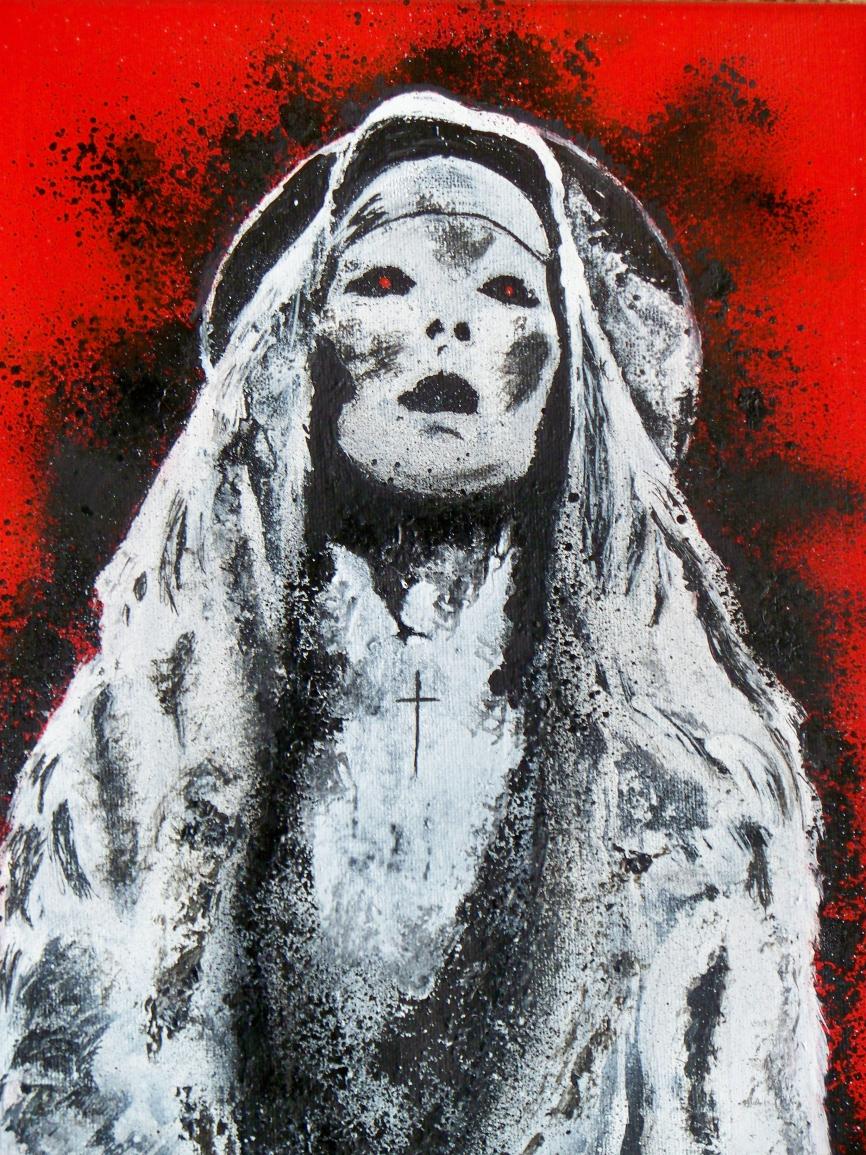Details
- 2012-12-11
- 0
- 62
- 2012
- Painting
- Aerosol Paint
- Religion
Pricing
- Original available - 0.00 USD

- RED DAWN OF THE MARTYR -
Description by Mister 13
Aerosol spray and kleenex on canvas, 3 coffee, 2 cigarettes. PLEASE LISTEN the song watching the image, is the 50% of the piece. A martyr (Greek: μάρτυς, mártys, "witness"; stem μάρτυρ-, mártyr-) is somebody who suffers persecution and death for refusing to renounce, or accept, a belief or cause, usually religious. In its original meaning, the word martyr, meaning witness, was used in the secular sphere as well as in the New Testament of the Bible. The process of bearing witness was not intended to lead to the death of the witness, although it is known from ancient writers (e.g. Josephus) and from the New Testament that witnesses often died for their testimonies. During the early Christian centuries, the term acquired the extended meaning of a believer who is called to witness for their religious belief, and on account of this witness, endures suffering and/or death. The term, in this later sense, entered the English language as a loanword. The death of a martyr or the value attributed to it is called martyrdom. The early Christians who first began to use the term martyr in its new sense saw Jesus as the first and greatest martyr, on account of his crucifixion. The early Christians appear to have seen Jesus as the archetypal martyr. The word martyr is used in English to describe a wide variety of people. However, the following table presents a general outline of common features present in stereotypical martyrdoms. In Arabic, a martyr is termed shaheed, شهيد. Shaheed appears in the Quran in a variety of contexts, including witnessing to righteousness, witnessing a financial transaction and being killed, even in an accident as long as it doesn't happen with the intention to commit a sin, when they are believed to remain alive making them witnesses over worldly events without taking part in them anymore (Quran 3:140). The word also appears with these various meanings in the hadith, the sayings of Muhammad. Martyrdom in Judaism is one of the main examples of Kiddush Hashem, meaning "sanctification of God's name" through public dedication to Jewish practice. Religious martyrdom is considered one of the more significant contributions of Hellenistic Judaism to Western Civilization. Maccabees recount numerous martyrdoms suffered by Jews resisting Hellenizing (adoption of Greek ideas or customs of a Hellenistic civilization) by their Seleucid overlords, being executed for such crimes as observing the Sabbath, circumcising their boys or refusing to eat pork or meat sacrificed to foreign gods. In Induism, despite the promotion of ahimsa (non-violence) within Santana Dharma, there is also the concept of righteous (dharma), where violence is used as a last resort after all other means have failed. Examples of this are found in the Mahabharata. Upon completion of their exile, the Pandavas were refused the return of their portion of the kingdom by their cousin Duruyodhana; and following which all means of peace talks by Krishna, Vidura and Sanjaya failed. During the great war which commenced, even Arjuna was brought down with doubts, e.g., attachment, sorrow, fear. This is where Krishna instructs Arjuna how to carry out his duty as a righteous warrior and fight. In China, Martyrdom was extensively promoted by the Tongmenghui and the Kuomintang party in modern China, revolutionaries who died fighting against the Qing dynasty in the Xinhai Revolution and throughout the Republic of China period, furthering the cause of the revolution, were recognized as martyrs. The cult of the revolutionary martyr was also strongly developed in Vietnam and North Korea. There are thousands of Christian martyrs. Saint Stephen, the first one, was stoned. Saint James the Great was beheaded. Saint Matthew the Evangelist killed with a halberd (a combination of battle axe and spear). Saint James the Just, beaten to death with a club after being crucified and stoned. Saint Mark the Evangelist, was dragged in the streets of Alexandria then beheaded. Saint Peter, crucified upside-down. Saint Bartholomew flayed alive and crucified. Saint Antipas of Pergamum, according to tradition, roasted to death in a brazen bull during the persecutions of Emperor Domitian. Saint Lucy´s martyrdom consisted of soldiers gauging out her eyes with a fork. Other torture tactics were fill the martyr with incense mingled with live coals, and who being constrained by the pain to scatter the incense, to clad in the iron tunic and shod with the red-hot shoes, which consume the flesh off his bones, to seat in the iron chair, while a red-hot helmet, or morion, is set on his head, put the martyr into a caldron full of molten lead or boiling oil or to be bound to four pegs fixed in the ground, with a fire burning underneath.







